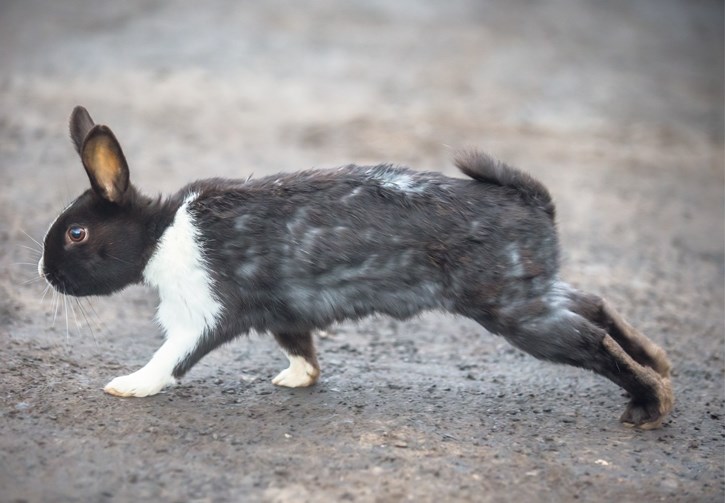CANMORE – Permanently getting rid of feral rabbits could be back on the discussion table.
Among 28 recommendations from the human-wildlife coexistence task force’s technical working group is one that includes removing prey, such as feral rabbits, to reduce the amount of wildlife activity within developed areas.
Canmore Mayor John Borrowman, who is co-chair of the task force, said the municipality has struggled with this issue for many years, noting there has been a feral rabbit trapping program in place since 2012.
“There’s only one way to be more successful in that and council over the years has been loath to go to that solution – the only certain approach is lethal,” said Borrowman.
“That’s not pretty and we, for a number of reasons, preferred to use the trapping as a solution, but when we first approved that we had anticipated it being more successful than it has been.”
Mayor Borrowman said the issue may again be raised as part of public consultation on the human-wildlife co-existence committee’s recommendations.
“The Town has resolved itself to this point to managing the reduced numbers rather than eliminating feral rabbits,” he said.
“But it may come out of these conversations. There may be political will and public support on being more aggressive on managing food attractants.”
Canmore’s rabbit problem began in the 1980s, when a dozen or more domesticated rabbits were released in town. They are not a native wildlife species.
Since 2012, the Town of Canmore has hired a contractor to live trap and humanely euthanize rabbits. The total number of rabbits trapped since then is 1,275 at a cost $381,300.
The Town says there is no current estimate of the rabbit population, but short gestation periods and large litters can mean the population can jump from two to 70 within one year.
In the Bow Valley, wildlife professionals work to haze habituated wildlife out of urban areas. Even so, wildlife continues to use developments for security and available foods, such as playing fields, golf course grasses and feral rabbits.
In addition to being a wildlife attractant, feral rabbits also cause damage to public and private property, and leave a significant amount of feces.
The wildlife-coexistence group recommends removing or securing natural and unnatural attractants.
“This includes removal of natural attractants like buffalo berry and elk calving, and unnatural attractants such as fruit trees or feral rabbits,” states the report.
“It also includes using fencing to exclude ungulates from grass playing fields and preventing carnivores and prey from accessing cover under decks and sheds.”
The Bow Valley human-wildlife coexistence round table was created in late 2017 in response to concerns about the number of encounters between humans and wildlife, and how those encounters were being managed by local, regional and national agencies.
It was the management of a particular female grizzly bear known as number 148 and her movements over that summer that highlighted the challenges that wildlife face in a populated valley managed by different federal and provincial agencies.
After several encounters, grizzly 148 was shipped out of Canmore to unfamiliar territory in Kakwa Wildland Provincial Park north of Jasper at the end of July. Within two months, she was shot dead by a hunter in the then-legal hunt in B.C..
Public comment on the human-wildlife coexistence report is being sought until Aug. 10.




